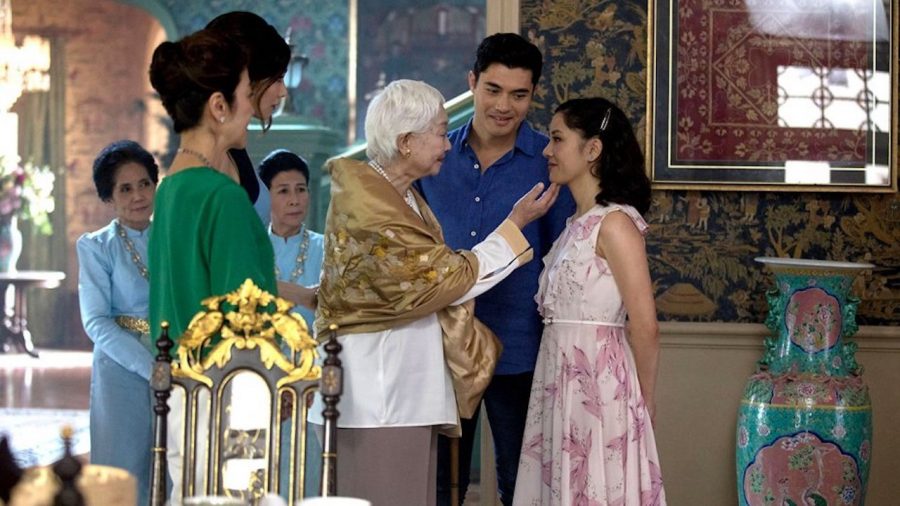Not enough: A Singaporean’s perspective on Crazy Rich Asians
May 8, 2019
Buckets of buttered popcorn and fizzy soda couldn’t conceal my excitement as I walked into the theater, ready to watch a movie that was potentially capable of altering history due to its extremely diverse representation. Having lived in Singapore for roughly 10 years, I was mainly looking forward to seeing a slice of the country which I so adored and missed. But as the movie drew to a close and people started crying with the main character, I was left with a sour taste in my mouth.
I thoroughly commend Jon M. Chu and the wonderful cast for bringing such a beautiful book to life, with cinematography, vibrant colors and the perfect wardrobe filled with the right amount of crystals and designer gowns. However, the representation of the Singaporean culture in the movie was something that has been bugging me since the day it was released, specifically the lack of Indian or Malay characters.
Don’t get me wrong. I understand that the premise of the film is heavily centered on a Chinese multi-millionaire family, but the absence of Indian and Malay people — even background characters — did not go unnoticed by my eyes.
Well, wait a minute. There was one scene, where two Sikh guards open up the doors of the mansion for the main character. Sure, that should have been enough to satisfy my want of more diversity on the screen, but the thing that makes me the most disturbed about that scene being the almost only inclusion of non-Chinese characters is the fact that these Sikh soldiers were introduced to Singapore through the British colonial rule, as a part of the British Indian army, and the fact that they are still being used by some family in Singapore makes me feel, well, uncomfortable.
Through all my childhood years in the country, I grew up with one phrase drilled into my head— racial harmony. We would have racial harmony days in school every year, where we would dress up in our ethnic wear, and learn to appreciate and understand other cultures. Even though Chinese people comprise the most dominant group in Singapore, Indian and Malay people aren’t necessarily the minority. Apartment buildings and schools have to have a set quota of Indian and Malay residents to further promote this diversity.
For a country that has tried so hard to maintain this principle in every aspect of life, the film has done some justice by making it a mostly Chinese exclusive film. It, in some ways, reinforces the invisible hierarchy that is very present in some areas of Singapore, where Chinese people are at the top of the ladder.
When talking to a friend about this issue, she told me to stop complaining, that representation was still representation, and that maybe if I had supported the movie, I would get more brown representation. Well. Let me get this straight. I have every right to be mad, to throw a fit, to express my personal opinion, as this movie essentially goes back on the very foundation of Singaporean morals.
And yes, I’m mad that I don’t see people like me or my friends, with brown skin in a country where you can pretty much see us everywhere.
What she doesn’t realize is that I have been subjected to the consequences of this hierarchical mentality ever since I was little. In elementary school, Chinese girls would not talk to me; instead, they would pluck at my hair and talk about me and my other Indian friends in hushed voices in front of us. In the first grade, a girl had made it very clear that she wouldn’t sit beside my friend just because she had darker skin.
Crazy Rich Asians, at least in my eyes, has only further perpetuated this notion and it sucks because little brown girls like me might grow up to think that they have to have lighter skin or marry into a Chinese family to reach that level of success. And we don’t need any more of those implications placed on us, especially since we are subjected to the menacing reign of Fair and Lovely- a skin whitening beauty product popularized in India.
The film’s inaccurate portrayal of Singapore’s cultural makeup make apparent that this movie was created to satisfy the American market, with insufficient research conducted to appeal to Singaporeans. Although Hollywood is doing an amazing job in the past few years to promote more minority groups on screen, it’s important that they soon realize that no minority group should be left behind.
Even a couple of background actors in the party clips would have satisfied me, by simply proving that yes, Indians and Malays are not excluded from higher ranks of society and that monetary success in the country is not exclusively reserved for the Chinese.




























